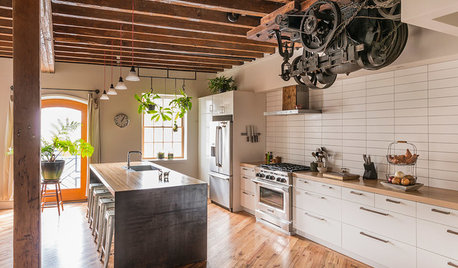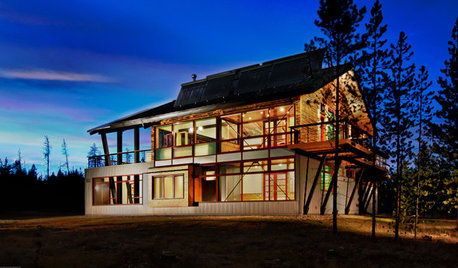Insulation/sealing, NJ Clean Energy program
JJMizzy
10 years ago
Related Stories

GREEN BUILDINGHouzz Tour: Pickle Factory Now an Energy-Wise Live-Work Space
A charming but poorly insulated 1880s Philadelphia commercial building becomes a spacious energy-efficient home and studio
Full Story
GREEN BUILDINGInsulation Basics: Natural and Recycled Materials
Consider sheep’s wool, denim, cork, cellulose and more for an ecofriendly insulation choice
Full Story
WINDOW TREATMENTSEasy Green: 9 Low-Cost Ways to Insulate Windows and Doors
Block drafts to boost both warmth and energy savings with these inexpensive but effective insulating strategies
Full Story
GREEN BUILDINGWhat's LEED All About, Anyway?
If you're looking for a sustainable, energy-efficient home, look into LEED certification. Learn about the program and its rating system here
Full Story
GREAT HOME PROJECTSUpgrade Your Windows for Beauty, Comfort and Big Energy Savings
Bid drafts or stuffiness farewell and say hello to lower utility bills with new, energy-efficient windows
Full Story
GREEN BUILDINGInsulation Basics: Heat, R-Value and the Building Envelope
Learn how heat moves through a home and the materials that can stop it, to make sure your insulation is as effective as you think
Full Story
MATERIALSInsulation Basics: What to Know About Spray Foam
Learn what exactly spray foam is, the pros and cons of using it and why you shouldn’t mess around with installation
Full Story
GREEN BUILDINGInsulation Basics: Designing for Temperature Extremes in Any Season
Stay comfy during unpredictable weather — and prevent unexpected bills — by efficiently insulating and shading your home
Full Story
CONTRACTOR TIPSBuilding Permits: What to Know About Green Building and Energy Codes
In Part 4 of our series examining the residential permit process, we review typical green building and energy code requirements
Full Story
GREEN BUILDINGZero Net Energy: A Hardworking-House Term to Know
Homes that consume only as much energy as they produce by renewable means are a goal for builders. Learn what ZNE means for you
Full Story





mike_home
energy_rater_la
Related Professionals
Frankfort Solar Energy Systems · Palo Alto Solar Energy Systems · Asheville Home Automation & Home Media · Birmingham Home Automation & Home Media · Framingham Center Home Automation & Home Media · Greatwood Home Automation & Home Media · Jamaica Plain Home Automation & Home Media · Pine Hills Home Automation & Home Media · San Marino Home Automation & Home Media · Stamford Home Automation & Home Media · Westminster Home Automation & Home Media · Federal Heights Home Automation & Home Media · Decatur Fireplaces · Fairfield Fireplaces · Parkland Fireplacesschroads
JJMizzyOriginal Author
energy_rater_la
mike_home
TDL_JC
mike_home
TDL_JC